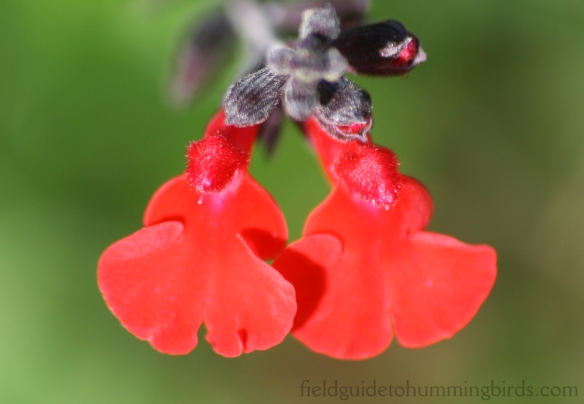
Lucky Wilbury, our most recent shelter cat, lounging on the cat throne. We have no intention of allowing Lucky outdoors off leash, as much for his protection as for the wildlife. Our previous cat, Bart, snuck out the door one night when the coyotes were howling and Great Horned Owls hooting. He was never seen again. We feel like we let him down and only hope that he met a quick, merciful end, not like the weeks, months, or years of suffering endured by most stray and feral cats.
There’s been a recent flurry of bad news about free-roaming cats, which is timely considering a recent visit to the comments section of one LB&E post by an incipient cat hoarder. His last comment was so out of touch with reality that I did him a favor by declining to publish it. That’s tragically typical of the breed, but I hold a polyanna-ish confidence in the power of facts to overcome the disinformation thrown around by obsessive cat defenders (OCDs).
Thought the “Black Death” was history? Think again. These days, plague is usually contracted from the bites of fleas in and around rodent colonies, but cats and dogs that eat infected rodents can contract and transmit the disease and/or bring home infected fleas to their human families. (Warning: The article is headed by a grisly photo of the original victim’s blackened hand.)
A kitten adopted from a TNR program tests positive for rabies:
The kitten was friendly and domesticated, according to the family that adopted it. Because of its demeanor, police aren’t sure that the kitten was part of the feral colony – there is a chance it was abandoned in the park. [emphasis mine]
One big reason that TNR is such a failure at reducing, much less eliminating, feral cat colonies is that the conspicuous presence of “managed” colonies in public places tends to attract people looking for places to dump unwanted pets. Inadequate commitment to vaccinating all cats in a colony at recommended intervals to prevent outbreaks of rabies, feline immunodeficiency virus, feline leukemia virus, etc. makes it a public health failure, too.
This press release from the American Bird Conservancy reports on an important new paper published in the journal Zoonoses and Public Health: “Zoonotic Diseases Associated with Free-Roaming Cats,” by R.W. Gerhold and D.A. Jessup (2012). The study reviewed the various diseases that infect free-roaming cats and the implications for public health of trying to manage feral cat populations via TNR. Three significant findings related to the second story above:
- Free-roaming cats are disproportionately responsible for exposing humans to rabies.
- Cat colonies “managed” by TNR attract unneutered, unvaccinated cats and increase their survivorship and reproductive success, leading to increases in colony size and potential for disease transmission.
- Feeding stations for feral cats attract wildlife such as raccoons, skunks, and foxes that may transmit rabies and other diseases to the cats and/or carry feline diseases into the wild. (Wild predators that prey on free-roaming cats are also vulnerable to their diseases and parasites; strains of feline leukemia virus that have killed critically endangered Florida Panthers have been linked to domestic cats.)
An even more insidious public health menace related to free-roaming cats is toxoplasmosis. The organism that causes this disease can infect many animals, but cats are the only ones that pass the parasite’s infective oocysts in their feces. A cat may only shed oocysts for a couple of weeks early in the infection, but they can persist in contaminated soil—garden beds, children’s sand boxes—for years. Authors Gerhold and Jessup cited a 2011 study that found that 63 percent of the patients with acute toxoplasmosis had become infected through contact with cat feces.
One more cat item that relates to the “kitty-cam” study in Georgia:
The authors conducted a survey of opinions about feral cats and their management with cat colony caretakers (CCCs) and bird conservation professionals (BCPs) across the United States. Naturally, they found strong polarization between the two groups (even though substantial portions of both described themselves as both cat- and bird-people), and they also documented how poorly informed/in denial CCCs were about the impacts of free-roaming cats on wildlife and public health. Even among the BCPs, awareness of feral cat issues was lower among respondents who lacked college degrees, so there’s a need for outreach and education even within the bird conservation community.
The authors suggest:
To the extent the beliefs held by CCCs are rooted in lack of knowledge and mistrust, rather than denial of directly observable phenomenon, the conservation community can manage these conflicts more productively by bringing CCCs into the process of defining data collection methods, defining study/management locations, and identifying common goals related to caring for animals… Our findings suggest that when such collaborative measures are not logistically possible, CCCs may be more likely to accept scientific results framed in terms of directly observable phenomenon (e.g., feral cats kill wild animals) rather than indirectly observable phenomenon (e.g., feral cats contribute to global declines among songbird populations). For instance, most CCCs see direct evidence of cats killing wild animals and would find denying those experiences difficult without creating some degree of cognitive dissonance.
In discussion of the Georgia “kitty-cam” study, OCDs glommed onto the low number of documented kills by the pets in the study, even though a conservative extrapolation of the results suggests that free-roaming cats kill more than 2 billion animals per year. It seems obvious that feral cats, even those that are being fed, will hunt more than well-fed, part-time outdoor pets, but seeing might be believing. It’s time to put “kitty-cams” on feral cats in managed colonies so that CCCs and OCDs can see the carnage up close and personal.
 A male Northern Cardinal with a rare mutation has become an Internet sensation!
A male Northern Cardinal with a rare mutation has become an Internet sensation!







